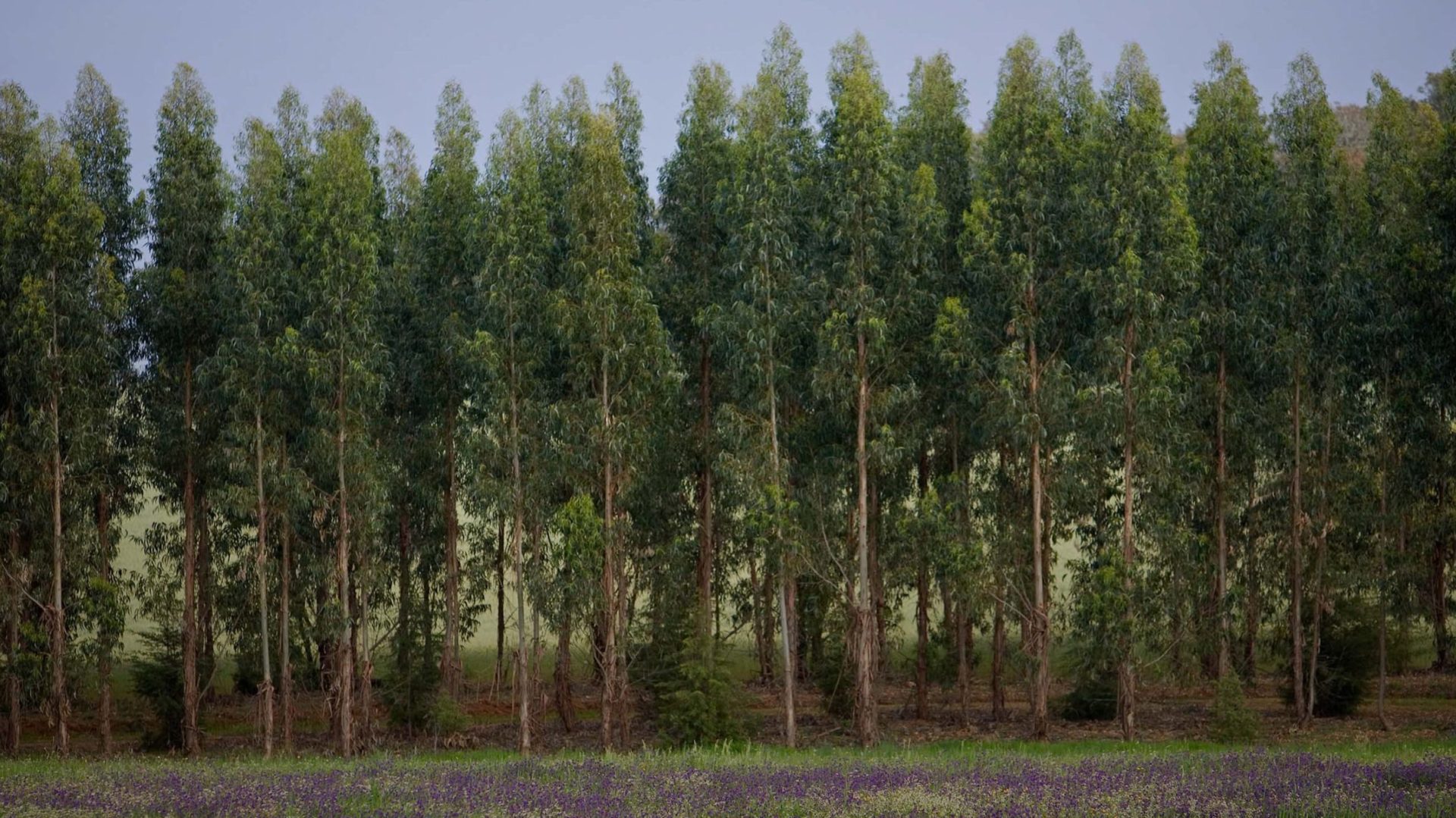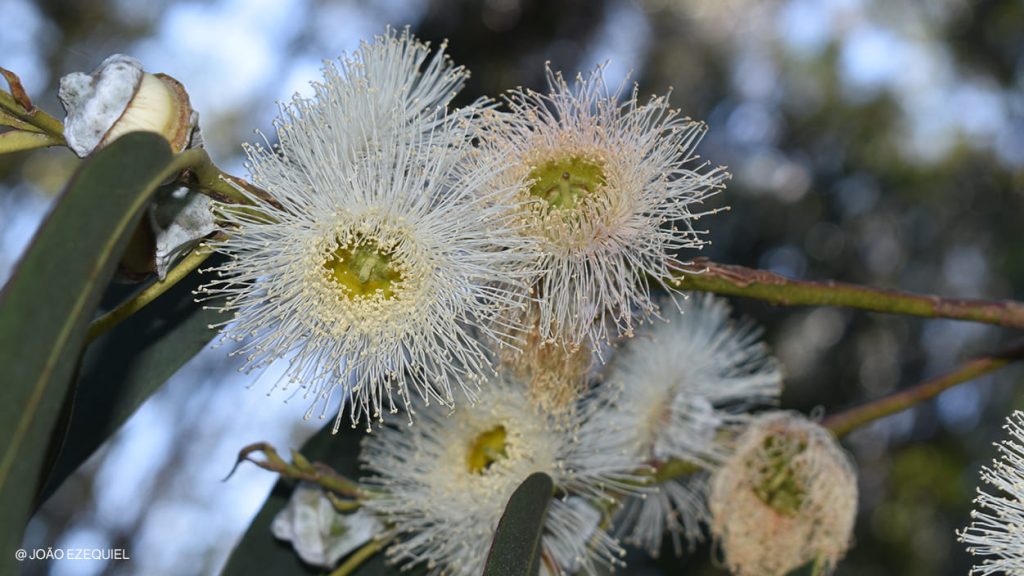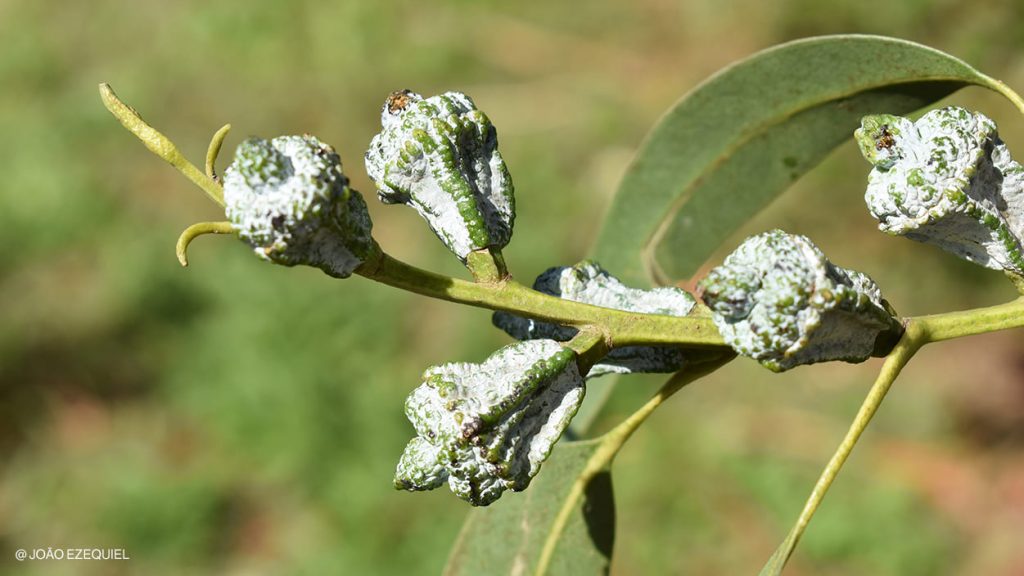The most frequent eucalyptus species in Portugal, the common eucalyptus (Eucalyptus globulus) began to be planted in the country in the mid-19th century, as an ornamental species and source of wood. The tree attracts birds, but also bees and other insects, which seek the abundant nectar of its flowers.
With a characteristic long and smooth trunk (in white and brownish tones) and an aroma reminiscent of mint, the common eucalyptus does not go unnoticed. This is an evergreen tree, which can grow to over 70 meters and does not survive very low temperatures.
Known as a fast-growing tree, it owes this characteristic to a combination of factors, including the abundance of fine roots that capture rainwater well; the availability of nutrients that result from the decomposition of leaves and bark; the perennial leaves, with pores (stomata) on both sides, which allow photosynthesis to be maintained at high levels throughout the year; and the association with fungi existing in the soil (mycorrhizae).
The leaves, in the shape of a sickle and measuring around 20 centimetres in length, are distinguished by being narrow and by their pendulous (almost vertical) arrangement, which has clear advantages: it allows less wind resistance, directs the moisture produced by atmospheric condensation to the foot of the plant, and reduces the tree’s stress in case of excess sunlight.
As for the flowers, which appear between September and October, they last until late spring. Large and whitish or yellowish in colour, they produce nectar in abundance – used by bees and many other insects for the production of honey. The fruits are small woody capsules, approximately tetragonal in shape, which can contain between six and 30 seeds.
Naturalised in the Iberian Peninsula, where it was introduced in the second half of the 19th century, it represents about a quarter of the national forest area. Around it, other species can be found, in addition to bees and other insects. An example is the Bonelli’s eagle (a species of bird of prey with “Endangered” status), which may seek out old eucalyptus trees to build their nests.





